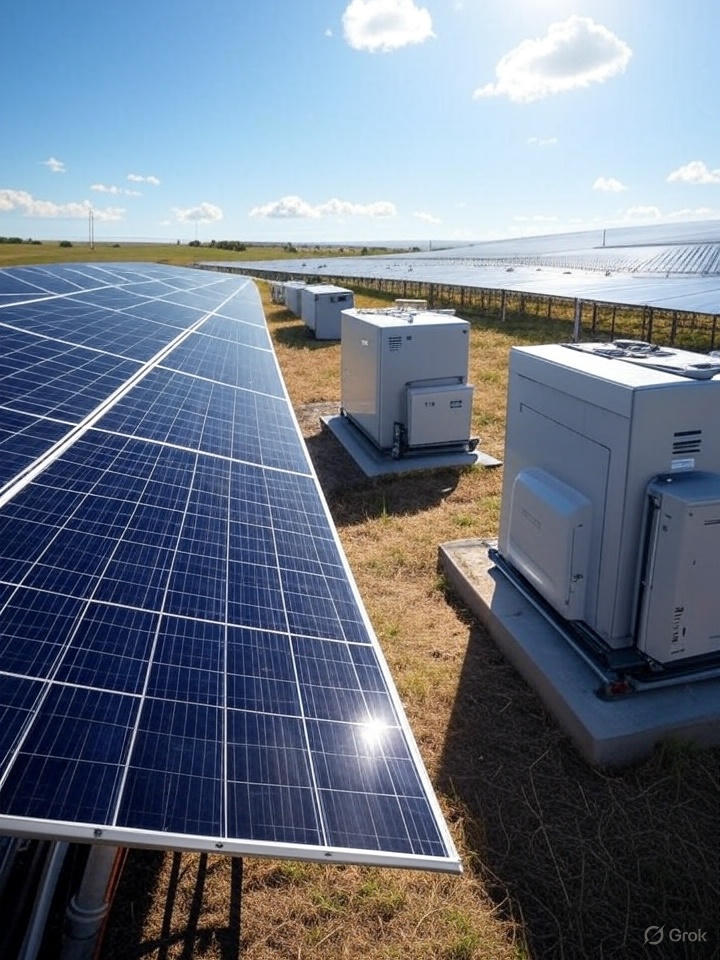 I caught the Inverter-Based Resources presentation by two engineers with a leading U.S. electrical power supplier at the 2025 Ovation Users’ Group Conference. These inverter-based resources (IBRs) are driven by renewable energy sources such as solar and wind.
I caught the Inverter-Based Resources presentation by two engineers with a leading U.S. electrical power supplier at the 2025 Ovation Users’ Group Conference. These inverter-based resources (IBRs) are driven by renewable energy sources such as solar and wind.
They are transforming power systems, but this process presents significant challenges. Their intermittent nature complicates grid management and requires advanced balancing strategies. Unlike traditional synchronous generators, older IBRs lack inherent inertia, impacting frequency regulation and stability.
This changing dynamic increases grid vulnerability to disturbances and voltage instability. Managing IBRs also demands sophisticated control technologies to handle their dynamic behavior. Compliance with evolving grid regulatory requirements and interconnection standards is crucial for maintaining operational consistency. The presenters examined how these regulations and advanced control strategies facilitate addressing integration challenges to ensure reliable and resilient power systems.
They showed a site with 50MW of solar power generation and 25MW of battery energy storage. The key challenges are the lack of system inertia and the lack of visibility and control. Distributed IBRs often operate behind a meter (think rooftop solar), so system operators may not have real-time visibility or control, which complicates grid planning and operation.
Some inverters are not capable of operating in all the active power output levels specified in IEEE 2800. Finally, weather forecast uncertainties can affect what output the inverters can deliver.
IEEE 2800 establishes requirements for the reliable interconnection of IBRs. Key elements include:
- Frequency and voltage response
- Dynamic response
- Protection & control
- Grid support functions
- Testing & compliance (draft in IEEE 2800.2)
For the control system, focus areas include voltage regulation, frequency response, and reactive capability. The criterion for successfully tuning the control loops during commissioning becomes more clearly defined with the standard. The standard defines what response times are sufficient to satisfy the requirements.
They offered some tips regarding grid compliance. Ensure control loop logic is in the fastest task area. Ensure applications are configured to run as fast as possible. Ensure your trending tool is set up to plot from the start to prevent interpolation. Ensure historized points have a small DB and a fast scan frequency.
The challenges with reactive power capability include that the minimum power capability at the plant point of measurement (POM) shall occur within the continuous operating region. The minimum reactive power capability shall be met at the POM for all active power output levels, including at zero of the IBR plant. Typical inverter limitations include AC voltage rating, MVA rating, temperature rating, minimum operating power, and output rate of change. Typical medium voltage transformer limitations have a bushing voltage rating per IEEE 386-2016 and tap settings. The typical main step-up transformer limitations include the MVA limitations and tap settings.
Leading and lagging reactive power capability to plus or minus 5%. Operating continuously in these regions requires careful consideration during the design of the plant. The inverters must be set to prioritize reactive Q (Qmin) over active (P) power. The site power meter must be capable of providing high-resolution feedback to the controls.
IBR plants need to have models that are indicative of their actual operations. It’s not just a technical preference—it’s a critical tool for ensuring safe, stable, and compliant integration of modern energy resources into the grid.
Today’s “grid-following” inverters operate as current sources following the existing voltage and frequency provided by the grid, typically from synchronous generators. In low-inertia grids, these grid-following IBRs can contribute to instability.
Inverter technology is advancing to address some of the reactive power challenges in IBRs. Grid-forming (GFM) inverters can provide VAR/Voltage support during a grid disturbance, if required in their application, in addition to the usual megawatts. They can essentially act as synthetic inertia–being voltage sources generating their own stable voltage and frequency reference without needing an external grid signal, enabling this inertia emulation and rapid response to disturbances.
These advancements in inverter technology should help bring greater stability to grids with larger renewable energy supplies.
